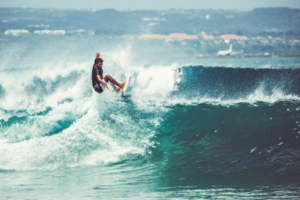Over 50% of Americans over the age of six participated in outdoor activities in 2021. This goes to show just how many of us enjoy the great outdoors!
While some people take it easy with flat hikes, others like a challenge. If you’re in the latter category, then you might be climbing mountains in the near future.
But before you can set off, you need to have the right mountaineering gear. Otherwise, you’re in for a difficult and even dangerous time.
Keep reading to see what climbing gear you need to buy before you tackle your big adventure!
Mountaineering Boots
Regular boots won’t do when you’re scaling challenging heights. Special mountaineering boots are what you need, and here’s why.
For one, they have fantastic traction and stability. When you’re walking across rocking and unstable grounds, you’ll feel more secure, and you’ll be able to walk for hours in comfort. Plus, you can attach crampons if you need to traverse through icy or snowy conditions.
Depending on which mountain you’re climbing, you can choose between insulated or non-insulated boots.
Obviously, insulated boots will offer you lots of warmth in the iciest of conditions. They’re also called double boots since they have a waterproof outer shell and an insulated inner bootie. You can get insulated boots that don’t have removable booties too.
Otherwise, opt for non-insulated boots. Not only are these optimal for better weather, but they’re also less bulky. They’ll be easier to carry around and wear.
Climbing Helmets
Climbing mountains is a dangerous feat not only because you’re going up heights. Nature’s unpredictable, so you never know if pebbles, rocks, or other hard objects will come loose and hit you on the head. This is why you need a decent climbing helmet.
Fortunately, most rock-climbing helmets are suitable for mountaineering. So if you already have one from your other hobby, you’re set.
Just make sure there are clips so you can attach a headlamp. This will increase your visibility when weather conditions aren’t great or when it gets dark.
You can also opt for a helmet with adjustable vents. This can help keep your head warm and toasty on cold days and cool on hot ones.
Harnesses
This is another thing you don’t need to buy if you already do rock climbing. A standard one will be enough for mountaineering. However, if you’ve got the budget for it, we suggest buying a mountaineering harness since it’ll be more comfortable.
This type of harness has leg loops, making it easy to put on and take off if you’re wearing crampons or skis. Plus, the gear loops make the the harness lightweight, which reduces your load.
Ropes
Not all mountaineering trips will require ropes, but if you’re doing technical rock climbing or glacier crossing, then you’ll need to pack some decent ropes.
The standard rope length is 60 meters, but luckily, you should be able to find shorter lengths available. This will keep your pack as light as possible!
Another thing to consider is the rope diameter. Keep an eye out for ones 8.5 mm in diameter, as these will be the lightest ropes you can buy.
Stick to ropes that have a dry treatment on them too. Not only will this keep the rope safer, but lighter too.
Ice Axes
For most mountaineering trips, an ice axe with a straight aluminum shaft, steel head, and steel spike will suffice.
To ensure you’ve selected the right length, hold the ice axe by the head, and relax your arm. The spike (the end after the handle) should be at ankle bone height.
In addition, you’ll need to consider the activities and your body size to get an ice axe that’s efficient but not cumbersome to carry around.
Crampons
We mentioned crampons earlier, but you might not know what they are. These are boot attachments you can use to traverse snow and ice more efficiently.
Obviously, you won’t need these if you won’t experience these weather conditions. But if you’re climbing Kilimanjaro, then this is essential gear.
You can get either steel or aluminum crampons. The former is more durable, but they’re heavier than the latter. In general, you aluminum is good for most climbs, but you’ll need steel for rock, snow, ice, and steep inclines.
There are also three types of crampons: strap-on, step-in, and hybrids. Do note that you can only use step-in crampons if your boots have welts or grooves that are at least 3/8th of an inch thick on the front and back. In addition, hybrid crampons need rear welts and grooves.
Navigation Tools
Bring the best navigation tools so you don’t get lost. Here are some of the essentials you should pack:
- Smartphone
- GPS
- Map
- Compass
In case you still get lost, these things will help you find your way or guide others to you:
- Personal locator beacon (PLB)
- Satellite messengers
- Wands
Camping Gear
Most likely, you won’t complete your climb in one day. So bring along either a three-season or four-season tent; the latter is better for heavy snow and harsh winds.
Inside, you’ll need a sleeping bag to get a good night’s rest. For winter climbs, make sure you pick a sleeping bag that’s rated for the cold.
To cook your food, bring a liquid-fuel or canister-fuel stove. For longer and colder trips, we suggest the former.
Get the Best Mountaineering Gear
Before you head out on your grand adventure, make sure to get the best mountaineering gear available. If it’s going to be a long-term hobby, then that’s all the more reason to invest in quality equipment.
While shopping, be sure to read reviews and compare prices and features. From there, you’ll end up with climbing equipment that’s perfect for your needs and budget.
Need more information on mountain climbing? Then check out the rest of our blog page.





Be First to Comment